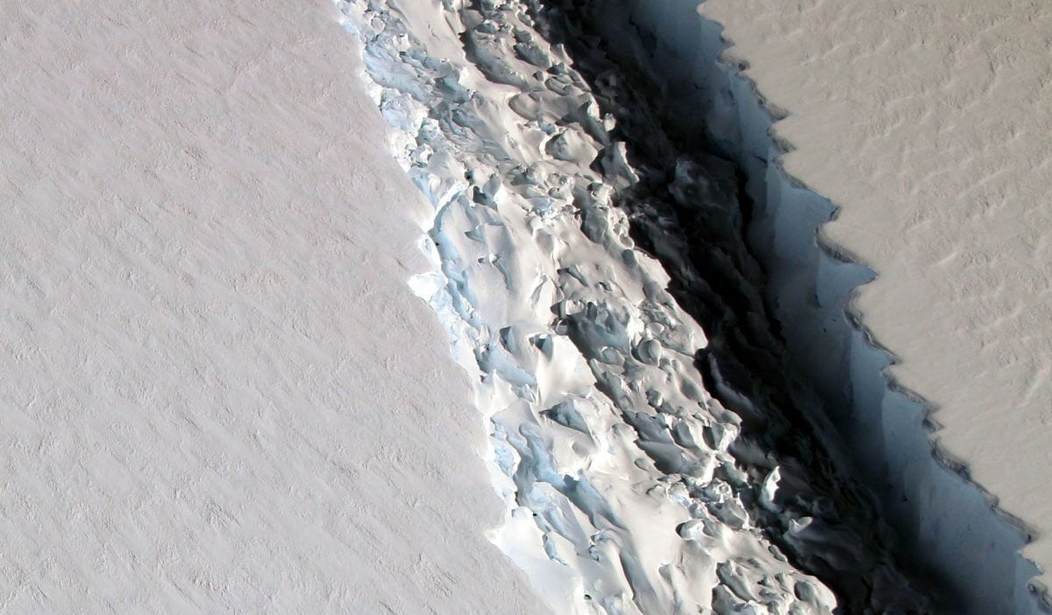Global-warming advocates often wonder why fewer and fewer people believe their hype. Could it be that the reporting on climate change looks to sensationalize what are, at bottom, less than dramatic facts?
Case in point: A gigantic piece of ice is about ready to break off the Antarctic ice shelf. The size of Delaware, “Larsen C” could, we are told by Chris Mooney of the Washington Post, “noticeably raise global sea levels by 10 centimeters, or almost four inches.”
That may not sound like much but, if true, it would significantly impact coastal cities around the world, especially estuaries and tidal basins.
It’s the latest sign of major ice loss in the fast warming Antarctic Peninsula, which has already seen the breakup of two other shelves in the same region, events that have been widelyattributed to climate change.
The crack in the ice shelf, known as Larsen C, has been growing at an accelerating rate. Since the beginning of December, it has grown about 11 miles in length, after extending 13 miles earlier in the year. In total, the rift has grown about 50 miles since 2011 (it’s almost 100 miles long in total), and has widened to well over 1,000 feet. Now, only 12 miles of ice continue to connect the chunk with the rest of the ice shelf.
When it breaks away, the loss would be of nearly 2,000 square miles of ice, say the researchers with Project MIDAS, a British government-funded collaboration based at Swansea and Aberystwyth universities in Wales. That’s larger than Rhode Island and almost as big as Delaware.
The consequences of the break could be dramatic.
“When it calves, the Larsen C Ice Shelf will lose more than 10% of its area to leave the ice front at its most retreated position ever recorded; this event will fundamentally change the landscape of the Antarctic Peninsula,” said the researchers in a statementabout the rift.
“We have previously shown that the new configuration will be less stable than it was prior to the rift, and that Larsen C may eventually follow the example of its neighbour Larsen B, which disintegrated in 2002 following a similar rift-induced calving event.”
Pretty scary, huh? Except, it’s not. Buried toward the end of the article is this:
The floating ice shelf is fed by the flow of ice glaciers that sit above sea level on the Antarctic Peninsula. As the shelf loses mass, these glaciers could flow more quickly — which would contribute to rising sea levels. Losses from the ice shelf alone, however dramatic, would not have that effect, as the shelf is already floating on water, just like an ice cube in a glass of water.
Fortunately, the Antarctic Peninsula does not contain nearly as much ice as other, thicker parts of Antarctica, such as the West and East Antarctic ice sheets. The potential sea level rise if Larsen C is lost would be measured in centimeters, not feet. (emphasis added)
Admittedly, shaving a chunk of ice the size of Delaware off the ice sheet is not good. But why overhype it? If global warming advocates want to convince people of their position, they can start by getting the facts right and reporting them without exaggeration, without hyperbole.
Trying to generate hysteria over climate change only strengthens the arguments of skeptics.










Join the conversation as a VIP Member